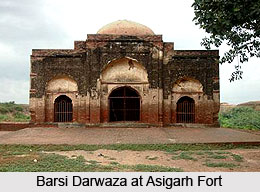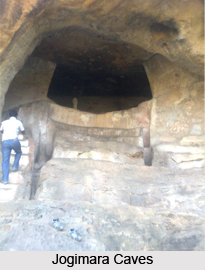Geeta Prakash is a small Sanskrit language work on Indian music. Literally, the term Geeta Prakash means `a work that throws light on music`. Geeta Prakash deals mainly with music, concentrating more on vocal music of North-Eastern region including Orissa. The concluding colophons of all the seven chapters bear the name of the author as Krishnadasa Badajena Mohapatra. Krishanadasa Badajena Mohapatra was an eminent poet, musician and musicologist of 16th century Orissa.
The Geeta Prakash has been divided into 7 chapters or Ullasa (joy). The treatise as a whole has been called `Pareeksa` or analysis of Geeta. The seven chapters of Geeta Prakash have been discussed below.
Suddhageetanirnaya
This chapter describes the characteristics of the pure or high class Geeta. The author defines Geeta as "Ranjak: Swara Sandarbo Geetam" i.e., a charming composition of pleasing notes. This definition of geeta here is exactly the same as it is in the Sangita- Ratnakara of Sarangadeva of 13th century. A.D. Sarangadeva made a distinction between these two words. According to him `Gandharva` was meant for salvation and `Gana` for providing aesthetic pleasure to the people at large. The author of Geeta Prakash has accepted the definition of Geeta as given by Sarangadeva. The author`s ideal of a Geeta seems to be a happy blend of fine poetry, sweet sound and colourful composition.
He divides Geeta into two types, namely, Anibaddha and Nibaddha. According to Krishnadas Badajena Mohapatra whichever is set in Tala is Nibaddha and Anibaddha is sung without Tala. The Sudha Prabandha must have `Dhatu`, `Anga` and `Alapa`. According to him the three classifications of Nibaddha Geeta are Shuddha, Chhayalaga and Kshudra. The author then devotes the rest of the chapter to the description of the characteristics of Sudhageeta. The Sudhageeta must have Dhatus, Angas and Alapa. He describes the Angas of a Prabhanda as mainly four- Vakya, Swara, Pata and Tenaka. The author has not given any description of the varieties of Prabandha but he has given references to the subject names, definition and short description of only two Prabandhas, namely, Matrika and Swarartha Prabandha. The author ends this chapter by saying that Prabandha must have two Angas but in Sooda Prabandha, only Vakya Anga is used.
Salaganirnaya
This chapter deals with the Chhayalaga, Salaga Geeta or Salagasooda Geeta. In Sangeeta Ratnakara, Sooda Geeta consists of seven Talas but according to the ancient authors of Orissa, Sooda Prabandha carries at least nine Talas. Some add two more Talas on these, and Krishnadasa adds one more Tala, namely Simhanada. In this chapter he elaborates the time measure and its technical aspects, its constituents such as the Virama, Druta, Laghu, Guru, Pluta etc. He mentions that the composition should begin with Aditala and be closed with Ekatali, the middle order being left to the composer`s pleasure. He himself composed songs in Sanskrit.
Kshudrageetanirnaya
This chapter deals with Kshudrageeta. The word `Kshudra` means small. But here it meant a composition possessing a small part of the characteristics of Salagasooda Geeta So this Geeta consists of Dhatus and Talas only. The Kshudrageetas are of four types, namely Chitrapada, Chitrakala, Dhruvapada and Panchaii. Chitrapada refers to `Padas` made distinctly different from other Kshudrageeta variety. Verbal sweetness rather than tonal variety is the dominant trait of Chitrapada. In the Chitrakala Geetas, the `Dhruva` part of the Geetas consists of less numbers of Matras than the other parts which however are of equal metrical length. The number of stanzas in a Chitrakala type of song may be from three to eight. There are two types of Dhruvapada. In the first category there are only two stanzas, one stanza serving as Dhruva and the other as Abhoga. Panchaii is the type of Ksudrageeta having an extensive number of stanzas. It is of two types, namely, Sadhruba and Adhruba.
Gunanirnaya
In this chapter the author discusses the qualities of Geetas, known as Geetagunas, which contribute to the aesthetics of Geeta. The qualities of Geeta are- it uses different types of Gamakas; it varies due to Laya (tempo), Yati (pause), and time measure; simplicity of the verbal structure; elaboration of the Raaga in which the Geeta is sung; the Tenna is being performed only after Pata and Swara. Moreover, there is a guideline for composers analysing Vakyas which possess Guna, Alankar and Rasa, being the necessary parts of a successful Geeta. The author concludes the chapter after stating the technical aspects dealing with the actual
performance.
Raganirnaya
Fifth chapter has been devoted to the definition and description of Raagas.
Swaranirnaya
This chapter has been devoted to the exposition of Jati, Swara, Grama, and Sruti.
Dosanirnaya
This is the concluding chapter. The author has pointed out the flaws in the verbal structure of the Geeta composition as well as in its performance.




